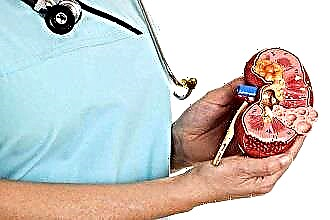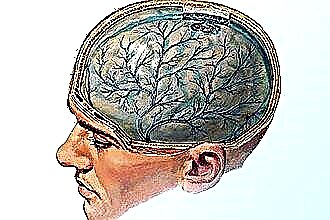Ear congestion after otitis media is a common complication that signals the presence of inflammation in the auditory canal that connects the middle ear to the nasopharynx. When a problem occurs, many patients report a noticeable hearing loss, tinnitus, and autophony. If the congestion does not go away within a few days, you need to seek help from an otolaryngologist.
 Disturbances in the work of the auditory analyzer are most often caused by the presence of catarrhal processes in the mucous epithelium.
Disturbances in the work of the auditory analyzer are most often caused by the presence of catarrhal processes in the mucous epithelium.
A blockage in the Eustachian tube leads to a decrease in pressure in the middle ear, which subsequently promotes the retraction of the ear membrane into the tympanic cavity.
Pathological changes lead to a decrease in the threshold of auditory sensitivity and the occurrence of congestion.
Root cause
Otitis media is an inflammation in the main parts of the middle ear, which leads to damage to the soft and bone tissues responsible for receiving and processing sound signals. As a rule, ENT disease develops against the background of general infections affecting the nasopharyngeal mucosa. In the process of reproduction, the pathogenic flora penetrates into the tympanic cavity through the auditory tube. It is for this reason that otitis media occurs much more often than external or internal.
Ear congestion with otitis media occurs as a result of inflammation of the soft tissues and the tympanic membrane, accumulation of serous effusion in the ear cavity. Failures in the operation of individual links of the sound-receiving and sound-conducting circuit lead to hearing loss, the appearance of noise in the ears, etc. With the timely arrest of pathological processes, tissues regenerate, but not immediately. Therefore, at the stage of regression of inflammation, the congestion disappears within a few days.
Important! If the congestion does not go away within a week, this may indicate the chronicity of the inflammatory process and the development of sluggish otitis media.
Etiology
How long is the ear blocked with otitis media? In case of successful treatment of an ear disease, the unpleasant symptom disappears within 4-5 days. However, about 10% of patients complain of the presence of autophony, noise and congestion in the ears for longer than the specified period. The main reasons for the occurrence of uncomfortable sensations include:
- tubo-otitis - catarrhal processes in the mucous membrane of the auditory tube, which lead to blockage of the canal and the formation of a vacuum in the middle ear cavity;
 stenosis of the ear canal - narrowing of the auditory canal leads to a weakening of the sound signals entering the ear, as a result of which hearing loss and congestion occur;
stenosis of the ear canal - narrowing of the auditory canal leads to a weakening of the sound signals entering the ear, as a result of which hearing loss and congestion occur;- sulfur plugs - blockage of the external auditory canal with earwax, intensively secreted by the glands during inflammation of the external ear;
- chronitization of otitis media - the transition of an acute form of otitis media to a sluggish one, characterized by the formation of permanent foci of inflammation in soft tissues;
- labyrinthitis - inflammation in the inner ear, accompanied by damage to the cochlea, auditory nerve, vestibule, etc.;
- neoplasms - benign (cholesteatomas) and malignant (basaliomas) tumors that interfere with the normal transmission of sound signals to the outer and middle ear.
The above reasons often lead to hearing loss, the development of autophony, hearing loss and a feeling of congestion. Inadequate treatment of ear pathology is fraught with the spread of foci of inflammation, as a result of which complications such as meningitis, brain abscess, mastoiditis, etc. may occur.
Clinical manifestations
Approximately every 10th patient develops temporary hearing loss after ear therapy. This may be due to insufficiently rapid regeneration of the affected tissues or the development of complications. If ear congestion remains after otitis media, it is worth being examined by an otolaryngologist. Direct indications for visiting a doctor will be:
- autoacusion;
- hearing loss;
- headache;
- dizziness;
- noise in ears;
- heaviness in the head.
Important! Constant dizziness may indicate damage to the vestibular apparatus and the development of labyrinthitis.
The symptomatic picture can be supplemented by hyperthermia, otorrhea, nausea and malaise, which often signal the development of purulent otitis media. If the above symptoms occur, you need to undergo antibiotic therapy. Untimely elimination of abscesses can lead to the development of mastoiditis and even sepsis.
Development mechanism
Why is the ear blocked after otitis media? In about 70% of cases of development of ear pathologies, otitis media is diagnosed in patients.
The disease is characterized by damage to the mucous membranes of the tympanic cavity and the Eustachian tube. The auditory tube, in turn, has two important functions:
- drainage - prevents the accumulation of serous effusion in the middle ear cavity;
- ventilation - neutralizes the pressure difference in the cavity of the outer and middle ear.
During inflammation, the mucous membranes of the ear canal swell, which leads to a blockage. For this reason, negative pressure is created in the tympanic cavity, as a result of which the ear membrane is literally pulled into the middle ear. Pathological processes are always accompanied by the appearance of uncomfortable sensations, which include congestion, a feeling of fluid transfusion inside the ear, heaviness in the head, etc.
Treatment methods
When will ear congestion after otitis media go away? In the case of timely relief of inflammatory processes, the discomfort in the ear should go away within 5-7 days. However, in patients with reduced body resistance, tissue regeneration occurs over a longer period. In addition, the lack of positive dynamics may indicate a recurrence of ear pathology.
 In most cases, the treatment of ENT diseases involves the passage of a medication course of treatment. Depending on which pathogens provoked the onset of the disease, the following medications can be used in the treatment of ear pathology:
In most cases, the treatment of ENT diseases involves the passage of a medication course of treatment. Depending on which pathogens provoked the onset of the disease, the following medications can be used in the treatment of ear pathology:
- "Garazon" is a combined action drug with pronounced antimicrobial properties. Used to treat acute bacterial otitis media and eczema in the external auditory canal;
- "Otinum" - ear drops of antiphlogistic, decongestant and analgesic action. They quickly eliminate inflammation, therefore they are used in the treatment of acute otitis media at the pre-perforative stage of development;
- "A-Cerumen" is a solution containing surface active components that soften earwax. It is used to soften and remove ear plugs;
- "Otipax" - ear drops of antiseptic and analgesic action, which are used to treat middle and barotraumatic otitis media;
- "Ephedrine" - vasoconstrictor nasal drops that increase the internal diameter in the Eustachian tube;
- "Candibiotic" is an antifungal drug with anti-inflammatory properties. It is used in the treatment of otomycosis and purulent inflammation.
Medications for the treatment of ear diseases should only be selected by a specialist. Self-medication can provoke a decrease in local immunity and an exacerbation of the disease.
Physiotherapy
Physiotherapy procedures can be used to eliminate the symptoms of Eustachitis. They contribute to the restoration of normal blood circulation in tissues, thereby accelerating the regression of inflammatory processes.This leads to the speedy regeneration of the mucous epithelium, an increase in local immunity and the elimination of discomfort in the ears.
If the ear is blocked after otitis media, what to do? To relieve an unpleasant symptom, the following types of physiotherapy procedures can be used:
- UHF - influence on the foci of inflammation by electric fields in the ultrasonic range; helps to eliminate inflammatory processes and normalize blood circulation in the organ of hearing;
- UFO - treatment of affected tissues with ultraviolet light rays; has an immunostimulating and anti-inflammatory effect;
 microwave therapy - elimination of foci of inflammation by alternating electromagnetic fields; activates biochemical processes in tissues, which accelerates their epithelization;
microwave therapy - elimination of foci of inflammation by alternating electromagnetic fields; activates biochemical processes in tissues, which accelerates their epithelization;- electrostimulation - the effect on soft tissues and nerve bundles with electric currents; contributes to the normalization of lymph and blood circulation, accelerates metabolism and tissue regeneration.
With otitis media, the ear is blocked, what should I do? At the stage of resolving inflammatory processes, experts recommend:
- pneumomassage of the tympanic membrane - the impact on the ear membrane with air masses, provoking oscillatory movements in the membrane; helps to eliminate scars and adhesions that often occur with the development of purulent or adhesive otitis media;
- politcerization - a procedure for blowing out the auditory tube, which allows you to restore normal pressure in the tympanic cavity. The equalization of external and internal pressure helps to eliminate deformities in the ear membrane.
If necessary, the specialist carries out the sanitation of the middle ear, during which purulent masses and pathogens are washed out from the lesions. The procedure accelerates the regression of inflammatory processes and the restoration of normal hearing acuity.

 stenosis of the ear canal - narrowing of the auditory canal leads to a weakening of the sound signals entering the ear, as a result of which hearing loss and congestion occur;
stenosis of the ear canal - narrowing of the auditory canal leads to a weakening of the sound signals entering the ear, as a result of which hearing loss and congestion occur; microwave therapy - elimination of foci of inflammation by alternating electromagnetic fields; activates biochemical processes in tissues, which accelerates their epithelization;
microwave therapy - elimination of foci of inflammation by alternating electromagnetic fields; activates biochemical processes in tissues, which accelerates their epithelization;

